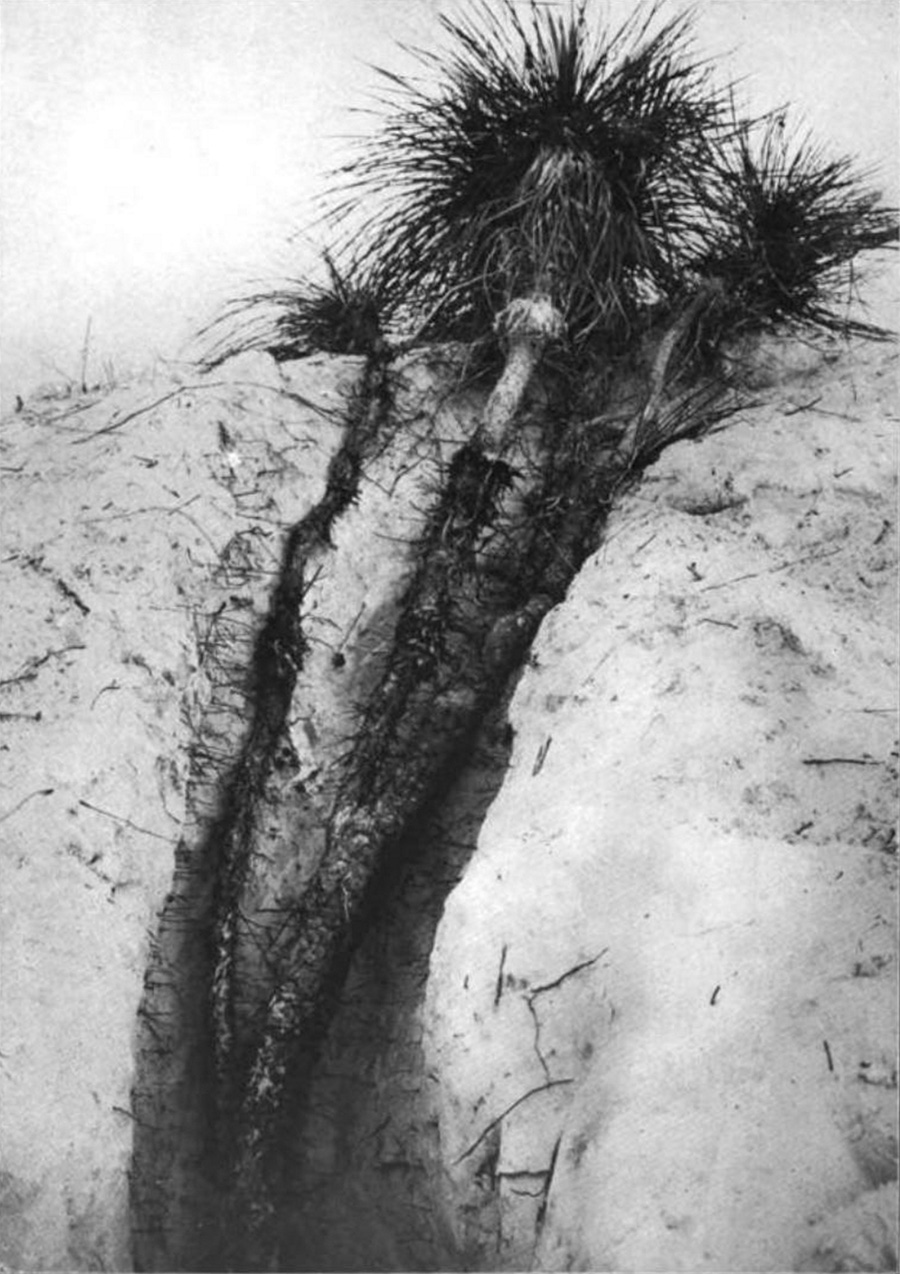gathering large hummocks of earth from drifting dust...

*
Plate VII. (cropped from border, to square; levels 15 1.00 255)
Yucca radiosa growing up through a dune 30 feet high, White Sands, New Mexico. A few of the upper circles of leaf bases can be seen in the picture.
Frederick Vernon Coville (1867-1937 *) and Daniel Trembly MacDougal (1865-1958 *). Desert Botanical Laboratory of the Carnegie Institution.
Carnegie Institution of Washington, Publication No. 6 (November 1903)
Stanford copy, no date of digitization
opens to same plate (colorized) in same copy at archive.org
—
“The Tularosa desert... has a red and apparently mellow soil, the most characteristic plant of which is Yucca radiosa, sometimes associated over large areas with grass, but often associated with low mesquites, the latter in some spots gathering large hummocks of earth from drifting dust, out of which the twigs of the mesquites project... Analyses of Sands... It is very evident that the sand readily dissolves in water...” pp 8-10
tags:
deserts; L’Origine du monde; F. V. Coville and D. T. MacDougal, Desert Botanical Laboratory of the Carnegie Institution (1903)